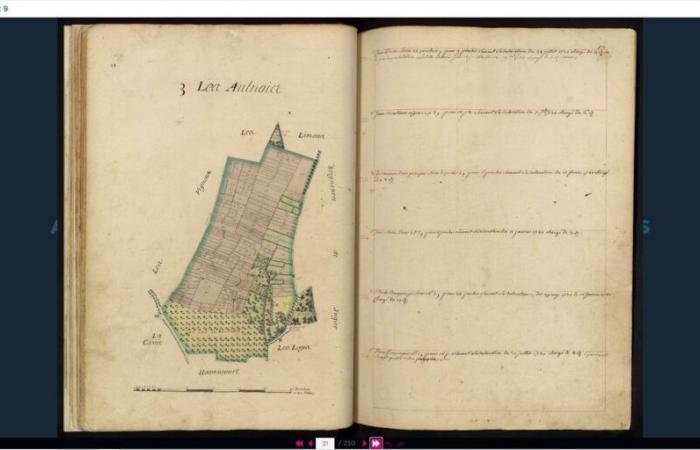
The Departmental Archives of Yvelines have just put the burrow of Hanneucourt Castle in Gargenville online on their portal. This digitization is part of their policy of inventorying and safeguarding the seigneurial burrows preserved in the communes of the department, in addition to those already present in the Archives in the notarial series. A work that is bearing fruit, since already 994 parts making up the burrows have been identified, digitized and made available on the web.
But how can this be of interest to genealogists? ? A burrow generally consists of a register and a plan. The register lists land assets, seigniorial rights and royalties due to a lord or an institution, such as an abbey for example. These documents were used in France from the Middle Ages to administer land and collect taxes or royalties from peasants or land tenants. The register is accompanied by a plan, and this is why the terrier is often compared to a modern land register, although it played a broader role in the management of seigniorial estates in feudal times.
To calculate these taxes and royalties, it was necessary to know the property held by our peasant ancestors. Periodically (mainly from the 15the have XVIIIe century), the lord therefore sent a notary or a clerk to draw up a new terrier. All the individuals cultivating land in the lordship came to present themselves before him. Everyone had to describe the house they live in, as well as the land they own and/or cultivate by locating them (in relation to the neighbors around them) and describing them by their surface area, their use (crops, pastures, etc.), the financial obligations that they generated towards the lord, as well as the easements, rights of passage, or use of these lands.
France





